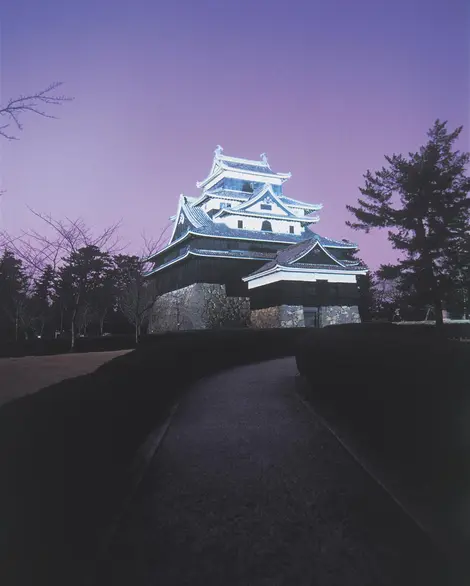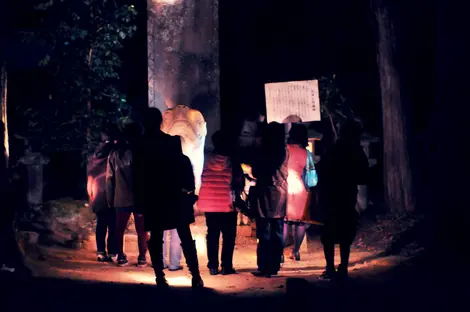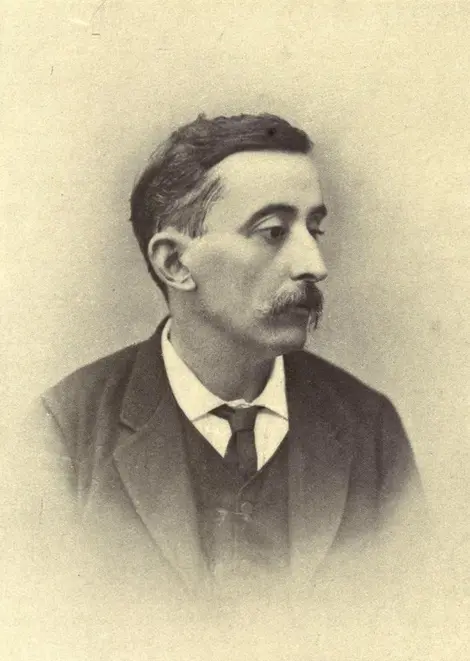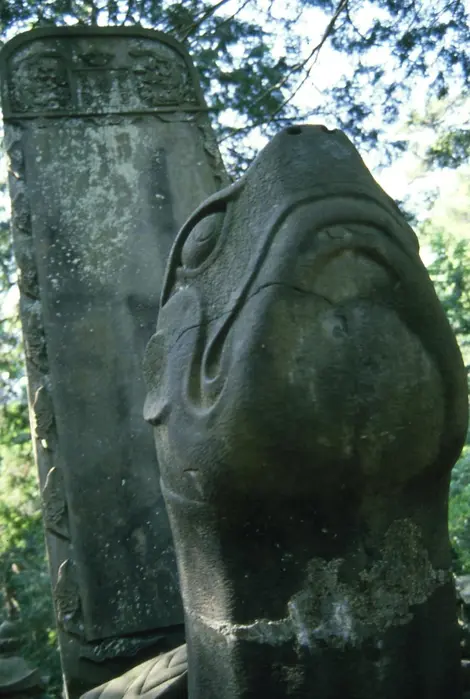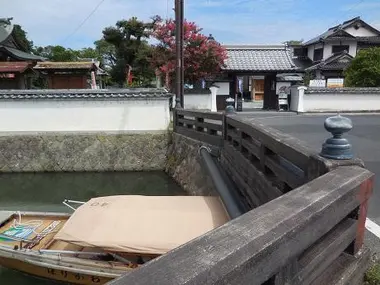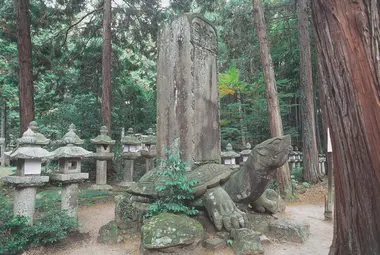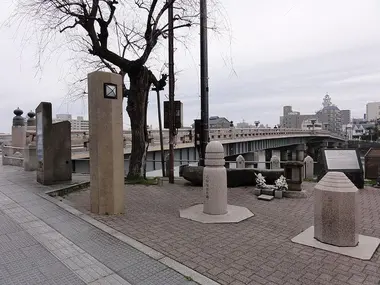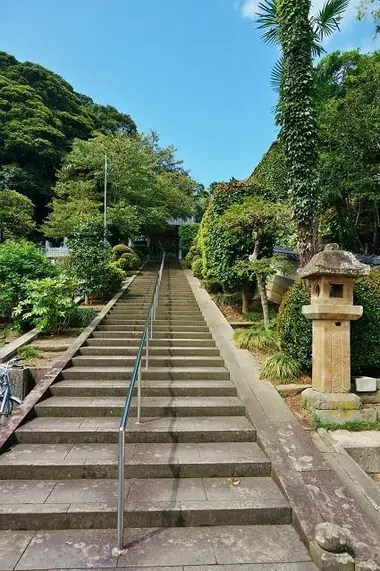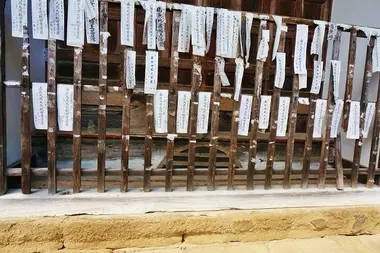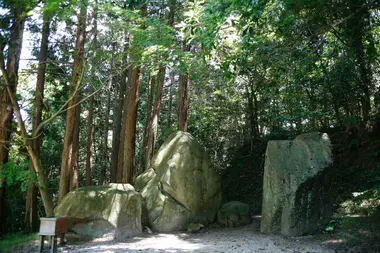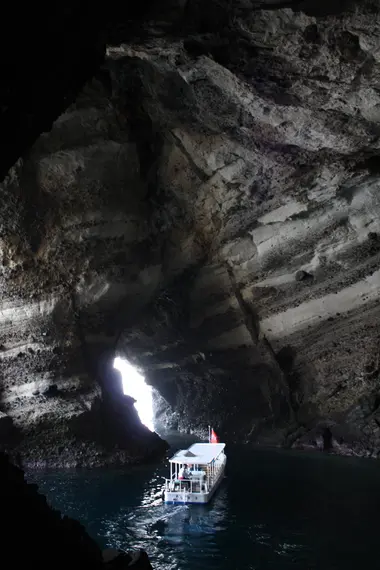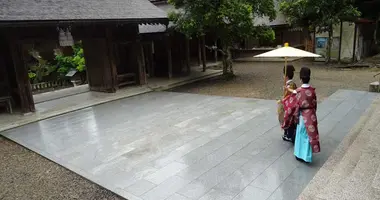The ghosts of Matsue 松江の幽霊
- Published on : 27/04/2018
- by : S.V.
- Youtube
Tales of terror
Traces of blood that never fade, people buried alive in the foundations of buildings, a cave sheltering the souls of dead children, a giant stone turtle coming alive to devour the inhabitants... Welcome to Matsue!
Goosebumps
Despite your best efforts, you can't control the trembling of your hands... Your flashlight flickers in the darkness. Breathless, you feel your heart pounding in your chest. To be honest, you're ready to leave at the slightest opportunity. The question "What am I doing here?" keeps coming back to you. When Matsue tourist office told you about a themed guided tour of the ghosts of the city, it seemed like a good idea. And here you are pacing the streets of the city in the dark night... Rest assured, although the ghosts of Matsue are numerous, you're safe! Lafcadio Hearn a.k.a Yakumo Koizumi, an Irish naturalized Japanese author, collected and compiled many fantastic stories of the city in several of his books. It was also in his Matsue residence that he begins writing "Kwaidan: Stories and studies of strange things". We owe Bon Koizumi, the great-grandson of Hearn, thanks for these tours that follow in the footsteps of the ghosts of the city. Since 2008, the tours (in Japanese only), organized with the help of the tourist office, have taken place at night in small groups of ten people and with only a flashlight.
Read on to learn more about some of the ghosts of Matsue...
Better to keep quiet
In Matsue there was a ban on singing on the Azuki-bashi bridge, located in front of Fumon-in temple (north-east of the castle). People respected the ban, for fear of invoking the wrath of a woman said to haunt the bridge. Yet, one evening, a samurai dared to brave the forbidden. When nothing seemed to happen, he laughed heartily and returned home, where a maid was waiting for him on the doorstep. Approaching her, she handed him a box that she said was a gift from her mistress. Opening it, the samurai made a macabre discovery: a severed head! Inside the house, lay the body of his child... headless.
The mother of Daio-ji
Near Daio-ji, a woman went to a shop every night to buy mizu-ame syrup. Intrigued by the thin, frail lady with the pale complexion, the owner of the shop decided to follow her one night, after her daily purchase. The woman went to Daio-ji temple cemetery. On entering, the man distinctly heard the crying of a baby. Following the cries to a tomb, he opened it and discovered the pale woman's dead body... and a baby, next to the cup of syrup. The young woman, buried prematurely, gave birth to her child in the grave. Her ghost went to the shop every night to buy something to feed her child, proof that love is stronger than death. There is a similar story that's told in the Higashiyama district of Kyoto.
The turtle of Gessho-ji
Gessho-ji houses the tombs of the Matsudaira clan, the lords who ruled the city between 1638 and 1871. An imposing stone turtle watch over the tomb of Matsudaira Murenobu, sixth lord of the clan. According to legend it would come alive after night fell, terrifying and devouring the local inhabitants. A monk of the temple, through intense prayer, mades a pillar of stone fall from the sky and land on the turtle's back, immobilizing it for eternity...
See also: Gessho-ji Temple
A sacrifice for a beautiful building
Several stories of "human pillars" are particularly famous in Matsue. This practice of hitobashira, burying people alive under a building during its construction, in order to prevent a future natural disaster or an attack, was practiced between the 4th and 16th centuries in the Japanese archipelago. During the construction of Matsue castle, a young girl who loved to dance was sacrificed in the foundations. Following this, girls were ordered not to dance in the streets of the city, so as not to anger the ghost of the young dancer. At the slightest dance, it's said the whole castle began to tremble!
A man named Gensuke was sacrificed during the construction of the Matsue Ohashi Bridge to appease the spirits of the river, who were systematically destroying the work in progress. He was buried alive in the riverbed under the central pillar of the bridge, nicknamed Gensuke-bashira. It's said that Gensuke was chosen as the sacrifice simply because he was the first to cross the bridge wearing a particular type of hakama (traditional Japanese clothing). After the sacrifice a curious custom began in Matsue: that of always drinking two cups of tea. Legend has it that on the morning of his death, Gensuke, hurrying to work, refused an offer to drink a second cup of tea. A decision that meant he was first to cross the bridge, with terrible consequences.
Mind the step
A geisha named Matsukaze was being bothered by a samurai one evening. She refused his insistent advances and tried to get away. Drunk with rage, the man struck her with his sword. Matsukaze fled towards the nearby Seikoin temple, where she hoped to find refuge. But the man caught her on the stairs of the temple and dealt her a fatal blow. Despite many attempts at cleaning, the traces of blood of the geisha have never disappeared from the steps. It's said that if you sing a little song down the stairs, Matsukaze will appear to you. For the curious, the blood-stained stairs of poor Matsukaze are found at the front of one of the buildings of Seikoin!
To the world of the dead
The entrance to the "Kingdom of the Dead" would naturally be in Matsue! To be exact, the yomotsuhirasaka is located in Higashizumo in the south-east of the city, and is the passage between the world of the living and that of the dead called Yomi; a passage marked by large rocks. The history of yomotsuhirasaka is rooted in the story of Inazami and Izanagi, the kami co-creators of the world. When Izanami died giving birth to the kami of fire, Izanagi decided to find her in the realm of the dead. But he was horrified to find her monstrously disfigured. He fled, pursued by the humiliated and furious young woman. Izanagi managed to escape Yomi, and blocked the access with a huge stone.
Mysterious caves
North of Matsue, the kaka-no-kukedo caves, accessible only by boat between March and November, are the scene of other fantastic stories. One of the caves is said to house the souls of dead children. Many jizo arranged on the ground are dedicated to the deceased. Hearn relates in one of his essays that a trickle of white liquid flows from the wall; the legendary milk fountain where children come to drink. The small towers of pebbles seen there are the work of the children who build them at night; Hearn's proof is the small footprints on the floor of the cave...





